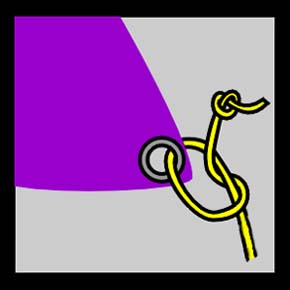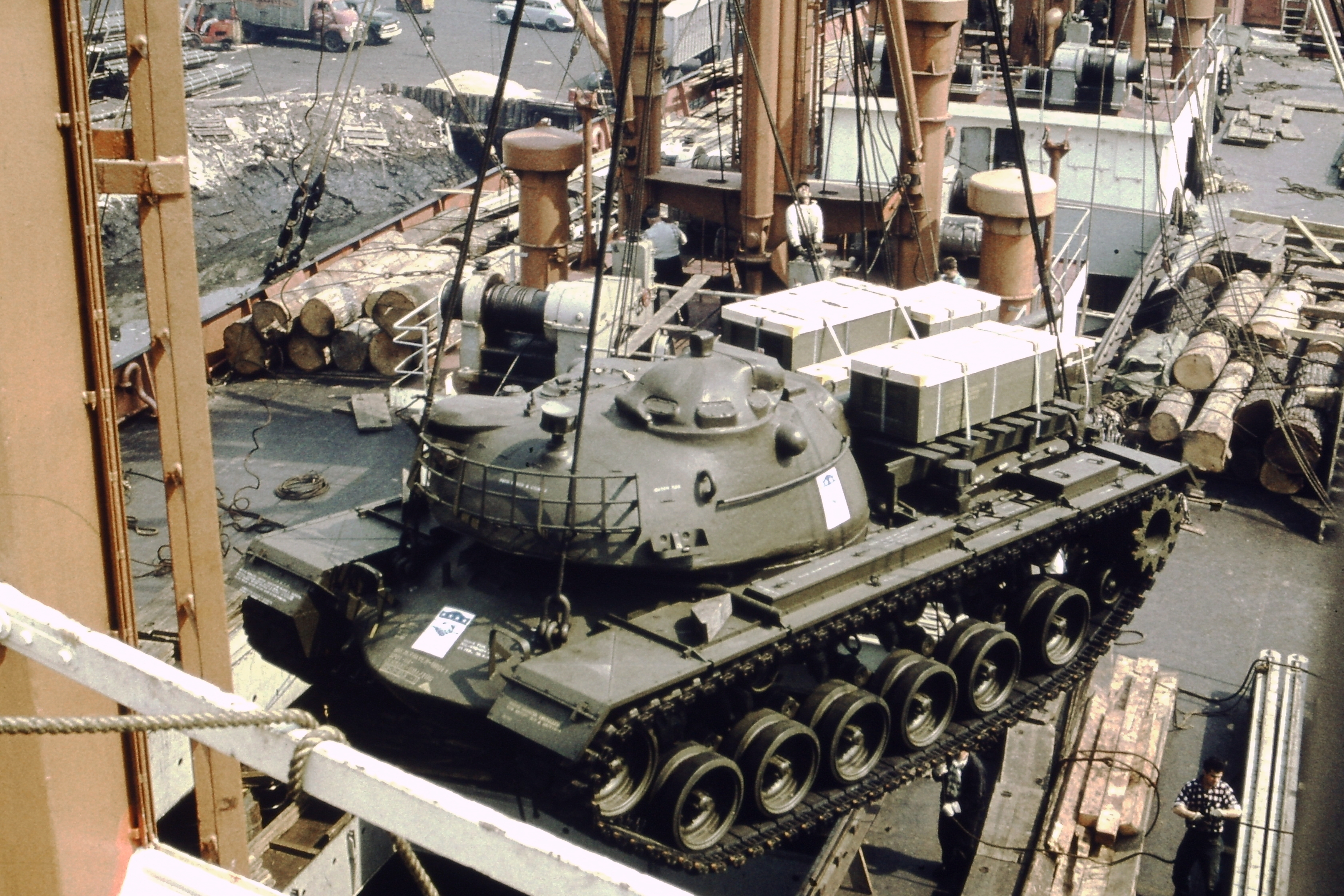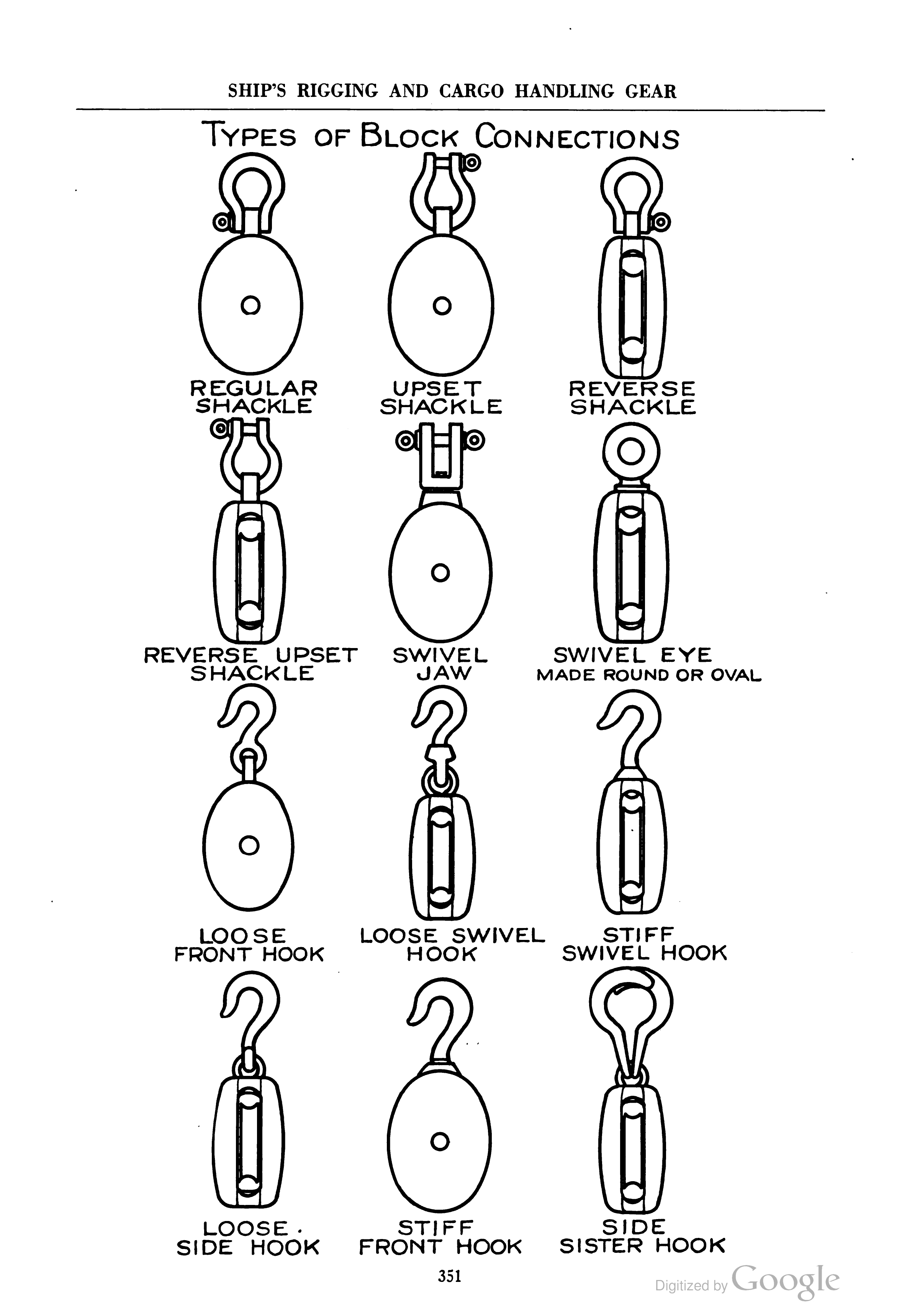|
Stevedore Knot
The stevedore knot is a stopper knot, often tied near the end of a rope. It is more bulky and less prone to jamming than the closely related figure-eight knot. Naming There is a lack of consensus among knot experts regarding the origin of the name. Many sources, including ''The Ashley Book of Knots'', suggest the knot was used by stevedores in their work loading and unloading ships. To raise and lower cargo they used large blocks and these required a larger stopper knot to prevent the line from running completely through the block. However, in ''The Art of Knotting & Splicing'', Cyrus Day disagrees, stating "the name originated in a pamphlet issued about 1890 by the C.W. Hunt Company, which sold rope under the name 'Stevedore'. It was subsequently adopted by dictionaries, engineers' handbooks, and other works of reference, and it is now firmly established in books, if not in the vocabulary of seamen."Cyrus Lawrence Day, ''The Art of Knotting and Splicing, 4th ed.'' (Anna ... [...More Info...] [...Related Items...] OR: [Wikipedia] [Google] [Baidu] |
Figure-eight Knot
The figure-eight knot or figure-of-eight knot is a type of stopper knot. It is very important in both sailing and rock climbing as a method of stopping ropes from running out of retaining devices. Like the overhand knot, which will jam under strain, often requiring the rope to be cut, the figure-eight will also jam, but is usually more easily undone than the overhand knot. The stevedore knot is the figure-eight knot with two half twists added before the end is finally stuck. Different types Figure-eight loop The figure-eight loop is used like an overhand loop knot. This type of knot can be used in prusik climbing when used in conjunction with a climbing harness, a climbing rope, and locking carabiner designed for climbing, to ascend or descend with minimal equipment and effort. Figure-eight bend The figure-eight bend knot is used to " splice" together two ropes, not necessarily of equal diameter. This knot is tied starting with a loose figure-eight knot on one rope ... [...More Info...] [...Related Items...] OR: [Wikipedia] [Google] [Baidu] |
Overhand Knot
The overhand knot is one of the most fundamental knots, and it forms the basis of many others, including the simple noose, overhand loop, angler's loop, reef knot, fisherman's knot, Half hitch, and water knot. The overhand knot is a stopper, especially when used alone, and hence it is very secure, to the point of jamming badly. It should be used if the knot is intended to be permanent. It is often used to prevent the end of a rope from unraveling. An overhand knot becomes a trefoil knot, a true knot in the mathematical sense, by joining the ends. It can also be adjusted, faired, or mis-tied as a half hitch Tying There are a number of ways to tie the Overhand knot. * Thumb method – create a loop and push the working end through the loop with your thumb. * Overhand method – create a bight, by twisting the hand over at the wrist and sticking your hand in the hole, pinch the working end with your fingers and pull through the loop. Heraldry In heraldry, the overhand knot ... [...More Info...] [...Related Items...] OR: [Wikipedia] [Google] [Baidu] |
Figure-of-nine Loop
The figure-of-nine loop is a type of knot to form a fixed loop in a rope. Tied in the bight, it is made similarly to a figure-of-eight loop but with an extra half-turn before finishing the knot. Also similar to the stevedore loop, the figure-nine loop is generally shown as being based on an intermediate form between the figure-eight knot and the stevedore knot. ''The Ashley Book of Knots'' shows this intermediate knot, in stopper form, as #521. While it uses more rope and is bulkier than the figure-of-eight loop, the figure-nine loop is somewhat stronger and less likely to jam. It is sometimes used instead of a figure-of-eight loop to attach a rope to an anchor point or belay Belaying is a variety of techniques climbers use to create friction within a climbing system, particularly on a climbing rope, so that a falling climber does not fall very far. A climbing partner typically applies tension at the other end of t .... Tying File:Neunerknoten-1.jpg File:Neunerknoten ... [...More Info...] [...Related Items...] OR: [Wikipedia] [Google] [Baidu] |
Ashley's Stopper Knot
Ashley's stopper knot, also known as the oysterman's stopper, is a knot developed by Clifford W. Ashley around 1910. It makes a well-balanced trefoil-faced stopper at the end of the rope, giving greater resistance to pulling through an opening than other common stoppers. Essentially, the knot is a common overhand noose, but with the end of the rope passing through the noose eye, which closes upon it. It may be multiplied to form a larger knot with more than three bights appearing around the knot. It is the result of implementing a double wall knot in one strand. Ashley developed this knot in trying to duplicate a knot he saw on a boat in a local oyster fishing fleet. When he had a chance to observe the knot up close at a later time he realized it was just a badly water-swollen figure eight stopper knot. Tying # Form an overhand noose, or simply tie an overhand knot around the standing part as shown. # Tighten the overhand portion of the knot around the standing part. ... [...More Info...] [...Related Items...] OR: [Wikipedia] [Google] [Baidu] |
Stopper Knot
Stopper may refer to: * Bung, a plug used to stop the opening of a container ** Laboratory rubber stopper, a specific type of bung * Plug (sanitation), used to stop a drainage outlet * Defender (association football), in soccer (association football) * Milkor 37/38mm and 40mm Stopper, a gun * Alternative name for a whitewater hole, in whitewater kayaking * Glossary of contract bridge terms#stopper, Stopper, in the game of bridge * Glossary of baseball (S)#stopper, Stopper, in baseball, a key starting or relief pitcher * Slang for stopwatch, a handheld timepiece designed to measure the amount of time * Stopper knot, a type of a knot at the end of the rope * Stopper, a common name for some plant species in the genus ''Eugenia'' See also * * * Stop (other) {{disambig ... [...More Info...] [...Related Items...] OR: [Wikipedia] [Google] [Baidu] |
Rope
A rope is a group of yarns, plies, fibres, or strands that are twisted or braided together into a larger and stronger form. Ropes have tensile strength and so can be used for dragging and lifting. Rope is thicker and stronger than similarly constructed cord, string, and twine. Construction Rope may be constructed of any long, stringy, fibrous material, but generally is constructed of certain natural or synthetic fibres. Synthetic fibre ropes are significantly stronger than their natural fibre counterparts, they have a higher tensile strength, they are more resistant to rotting than ropes created from natural fibres, and they can be made to float on water. But synthetic ropes also possess certain disadvantages, including slipperiness, and some can be damaged more easily by UV light. Common natural fibres for rope are Manila hemp, hemp, linen, cotton, coir, jute, straw, and sisal. Synthetic fibres in use for rope-making include polypropylene, nylon, polyesters (e.g. ... [...More Info...] [...Related Items...] OR: [Wikipedia] [Google] [Baidu] |
Figure-eight Knot
The figure-eight knot or figure-of-eight knot is a type of stopper knot. It is very important in both sailing and rock climbing as a method of stopping ropes from running out of retaining devices. Like the overhand knot, which will jam under strain, often requiring the rope to be cut, the figure-eight will also jam, but is usually more easily undone than the overhand knot. The stevedore knot is the figure-eight knot with two half twists added before the end is finally stuck. Different types Figure-eight loop The figure-eight loop is used like an overhand loop knot. This type of knot can be used in prusik climbing when used in conjunction with a climbing harness, a climbing rope, and locking carabiner designed for climbing, to ascend or descend with minimal equipment and effort. Figure-eight bend The figure-eight bend knot is used to " splice" together two ropes, not necessarily of equal diameter. This knot is tied starting with a loose figure-eight knot on one rope ... [...More Info...] [...Related Items...] OR: [Wikipedia] [Google] [Baidu] |
The Ashley Book Of Knots
''The Ashley Book of Knots'' is an encyclopedia of knots written and illustrated by the American sailor and artist Clifford W. Ashley. First published in 1944, it was the culmination of over 11 years of work. The book contains 3,857 numbered entries (the final number, "3854", is added to by three "1/2" #s (794.5, 1034.5, & 2585.5) and, in later editions of the book, #1425a for Hunter's Bend; and one number has no entry) and approximately 7,000 illustrations. The entries include knot instructions, uses, and some histories, categorized by type or function. It remains one of the most important and comprehensive books on knots. Use as a reference Due to its scope and wide availability, ''The Ashley Book of Knots'' has become a significant reference work in the field of knotting. The numbers Ashley assigned to each knot can be used to unambiguously identify them. This helps to identify knots despite local colloquialisms or identification changes. Citations to Ashley numbers are usua ... [...More Info...] [...Related Items...] OR: [Wikipedia] [Google] [Baidu] |
Stevedore
A stevedore (), also called a longshoreman, a docker or a dockworker, is a waterfront manual laborer who is involved in loading and unloading ships, trucks, trains or airplanes. After the shipping container revolution of the 1960s, the number of dockworkers required declined by over 90%. Etymology The word ''stevedore'' originated in Portugal or Spain, and entered the English language through its use by sailors. It started as a phonetic spelling of ''estivador'' (Portuguese) or ''estibador'' (Spanish), meaning ''a man who loads ships and stows cargo'', which was the original meaning of ''stevedore'' (though there is a secondary meaning of "a man who stuffs" in Spanish); compare Latin ''stīpāre'' meaning ''to stuff'', as in ''to fill with stuffing''. In Ancient and modern Greek, the verb στοιβάζω (stevazo) means pile up. In the United Kingdom, people who load and unload ships are usually called ''dockers''; in Australia, they are called ''dockers'' or ''wharfies''; and ... [...More Info...] [...Related Items...] OR: [Wikipedia] [Google] [Baidu] |
Ship
A ship is a large watercraft that travels the world's oceans and other sufficiently deep waterways, carrying cargo or passengers, or in support of specialized missions, such as defense, research, and fishing. Ships are generally distinguished from boats, based on size, shape, load capacity, and purpose. Ships have supported exploration, trade, warfare, migration, colonization, and science. After the 15th century, new crops that had come from and to the Americas via the European seafarers significantly contributed to world population growth. Ship transport is responsible for the largest portion of world commerce. The word ''ship'' has meant, depending on the era and the context, either just a large vessel or specifically a ship-rigged sailing ship with three or more masts, each of which is square-rigged. As of 2016, there were more than 49,000 merchant ships, totaling almost 1.8 billion dead weight tons. Of these 28% were oil tankers, 43% were bulk carriers, and ... [...More Info...] [...Related Items...] OR: [Wikipedia] [Google] [Baidu] |
Block (sailing)
In sailing, a block is a single or multiple pulley. One or a number of ''sheaves'' are enclosed in an assembly between ''cheeks'' or ''chocks''. In use, a block is fixed to the end of a line, to a spar (sailing), spar, or to a surface. A line (rope) is ''reeved'' through the sheaves, and maybe through one or more matching blocks at some far end, to make up a Block and tackle, tackle. The ''purchase'' of a tackle refers to its mechanical advantage. In general the more sheaves in the blocks that make up a tackle, the higher its mechanical advantage. The matter is slightly complicated by the fact that every tackle has a ''working end'' where the final run of rope leaves the last sheave. More mechanical advantage can be obtained if this end is attached to the moving load rather than the fixed end of the tackle. There are various types of blocks that are used in sailing. Some blocks are used to increase mechanical advantage and others are used simply to change the direction of a li ... [...More Info...] [...Related Items...] OR: [Wikipedia] [Google] [Baidu] |
Double Eight -1
A double is a look-alike or doppelgänger; one person or being that resembles another. Double, The Double or Dubble may also refer to: Film and television * Double (filmmaking), someone who substitutes for the credited actor of a character * ''The Double'' (1934 film), a German crime comedy film * ''The Double'' (1971 film), an Italian film * ''The Double'' (2011 film), a spy thriller film * ''The Double'' (2013 film), a film based on the Dostoevsky novella * '' Kamen Rider Double'', a 2009–10 Japanese television series ** Kamen Rider Double (character), the protagonist in a Japanese television series of the same name Food and drink * Doppio, a double shot of espresso * Dubbel, a strong Belgian Trappist beer or, more generally, a strong brown ale * A drink order of two shots of hard liquor in one glass * A "double decker", a hamburger with two patties in a single bun Games * Double, action in games whereby a competitor raises the stakes ** , in contract bridge ** Doublin ... [...More Info...] [...Related Items...] OR: [Wikipedia] [Google] [Baidu] |




